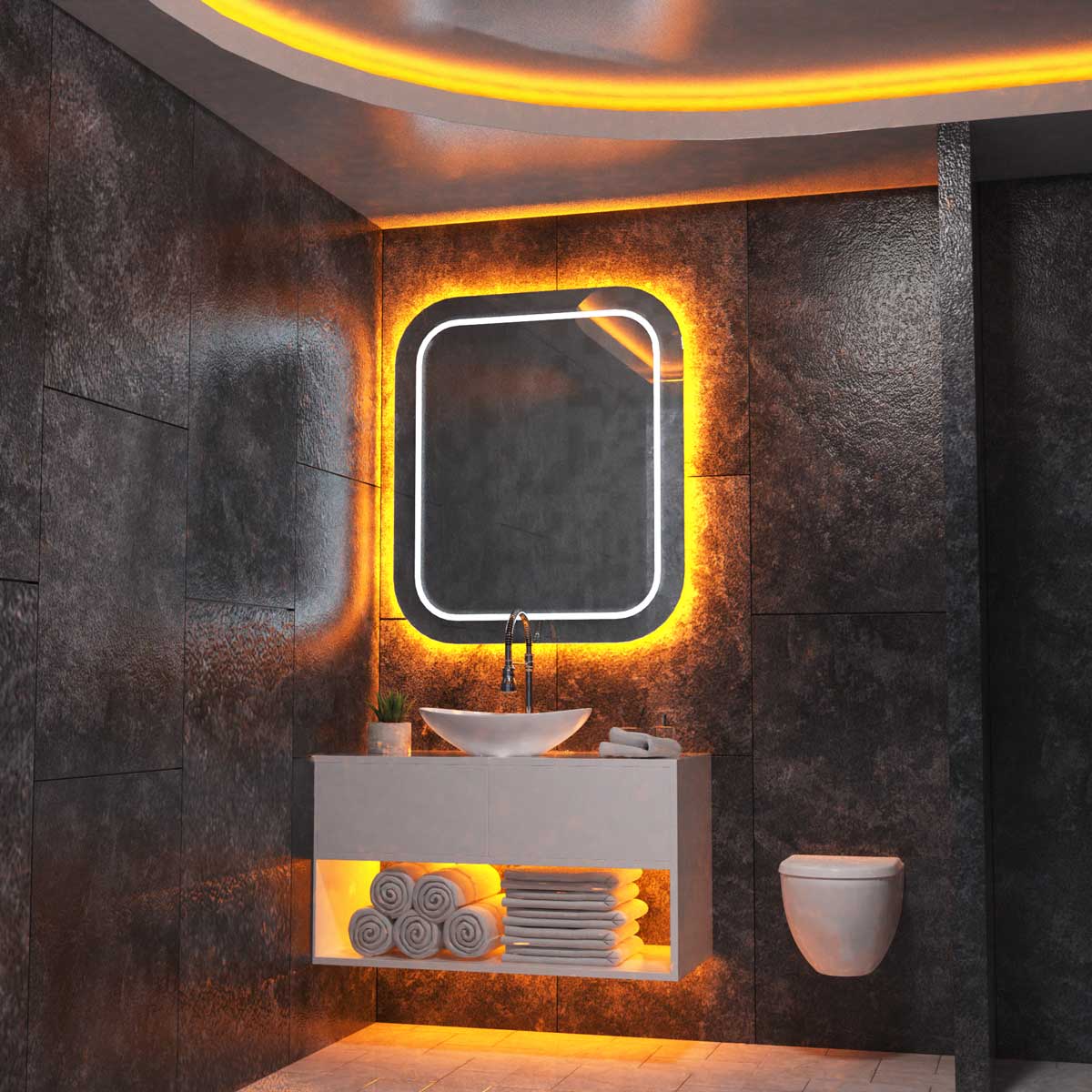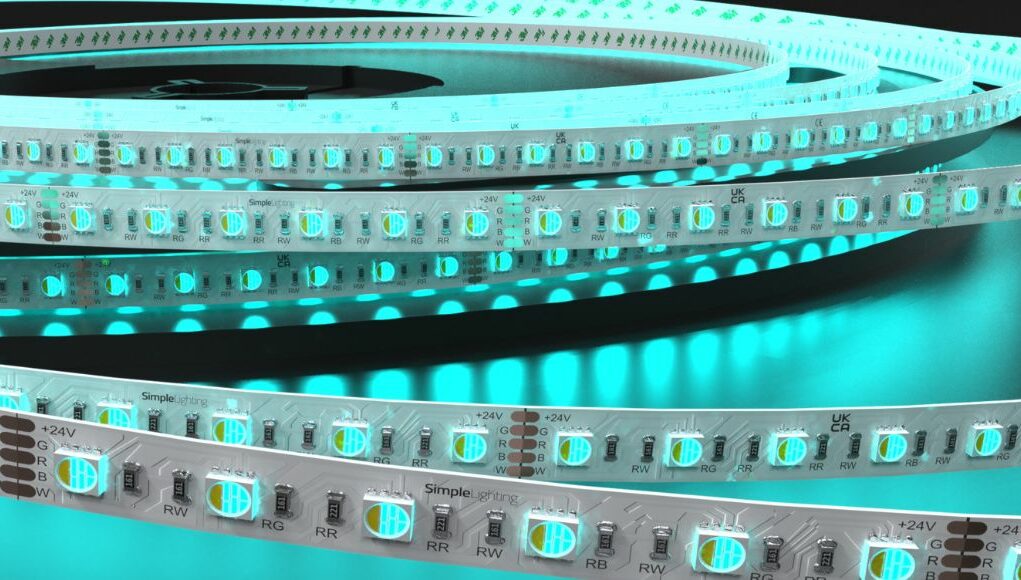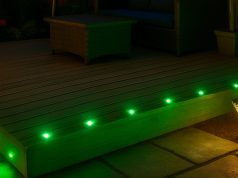When you visit a lighting shop, one of the items that you will find is a LED strip light. It’s pretty standard, and nowadays, people have been incorporating them non-stop in various applications. From the simplest to the most bizarre, strip lights are the go-to for most DIY projects, as they’re easy to work with and simple to install!
Aside from the typical single-coloured strip lights, RGB LED strip lights are another popular pick. It’s been around for some time and has showcased its potential to be an excellent accent lighting. RGB strip lights showed a new side of design, incorporating a creative and colourful LED installation. Because of the variety of colours one strip can produce, it gives people a more comprehensive range for customisation, making unique lighting designs.
Since RGB LED strip lights are becoming more prominent, a new version was launched, the RGB + W LED strips. This strip light has the same RGB LED chips but is added with a white LED diode for more colour diversity.
Difference between RGB and RGB + W LED Strips
It’s pretty apparent how the two strip lights are different. The RGB LED strip is designed with an LED chip that produces red, green and blue. It can create an extensive range of colours, including one that looks almost white. Well, if you need something brighter for task lighting, this kind of white may not be sufficient.
On the other hand, the RGB + W strip also comes with red, blue, and green LED colours but with the addition of a dedicated white LED chip. Because of the additional white diode, there’s more variety with the colour and shades. If you can only get violet in an RGB strip, you can get lavender, dark violet and other shades of violet in an RGB + W LED strip!
Remember that an RGB can produce an almost white colour? Well, with an RGB + W, it’s really a white colour that you can utilise as task lighting. Also, with this neutral tone, you can get a break from the striking display of colours!
Which is Better: RGB or RGB + W LED Strip?
An RGB + W strip light may outrank an RGB strip since it’s much more flexible and the selection is broader. Although it’s more expensive, the RGB + W strip comes with a wider set of installation and upgraded functionality.
Still, if you’re looking for something more affordable and your application does not require a white diode, you can use an RGB strip light. This is an excellent option if you prefer vibrant colours or your construction budget is tight.
Controlling an RGB and RGB + W LED Strip
Wiring an RGB and RGB + W strip light has a slight difference. If an RGB strip light has four outputs (red, blue, green, and power), an RGB + W has five (red, blue, green, white and power). As for the controls, they both have the same varieties but are prescribed for each type. So, there are RGB remote control and receiver and a specified RGBW remote control and receiver. Some controls have combined both, like an RGB or RGBW wall controller and other smart controlling devices.
To ensure that the controller will work with the strip light, remember this an RGB + W controller can work with an RGB strip. You just have to skip wiring the white. However, an RGB control will not work if you use an RGB + W strip light. Before purchasing, you must ensure that you have the correct combination to avoid wasting money.
RGB and RGB + W strip lights are low-voltage, so they require an LED driver and a controller. Don’t forget to purchase a power supply when you buy your strip lights!
Are RGB + W Strip Lights Harder to Install?
With the additional white diode, you may think an RGB + W strip has a more complicated installation process than an RGB strip light. However, that’s not the case. The additional white LED colour does not make it more complex than an RGB strip. It’s practically the same process but with an extra wire for the white light. Just remember to get the correct controller and driver to ensure everything goes smoothly.
In the installation, there’s not a lot of difference between the two types of strips. When it comes to controls, an RGB + W is slightly more complex to manage since there are extra functions. Nonetheless, once you have it all programmed, it’s smooth sailing from there!

Is the Extra White LED Chip Necessary?
This depends on your application and preference. If you like vibrant colours, the extra white chip may not be necessary for your purpose. However, if you want a purer white shade and more scope for colour mixing, your strips need that extra white chip. Wouldn’t it be nice to have more choices?
Does it End with RGB and RGB + W Strip Lights Only?
The list does not stop with those two colour-changing strip lights! Again, because this kind of LED strip is grabbing the attention of many, more variations were designed to satisfy every palate! Here are some that you may check out!
- RGBIC – it has the RGB chip plus a built-in independence chip that enables the strip to display a rainbow-like effect.
- RGBWW – it’s similar to an RGBW strip light but with the addition of warm white. The only difference between the two is the saturation of the colour white. Because of the warm white chip, this strip can produce a softer yellowish-white glow.
- RGBCCT – this strip light offers a variety of colours (RGB) and colour temperatures (CCT). Aside from the millions of shades you can access with the RGB chip, you’ll also get cool white, natural white, and warm white LED colour!
RGB and RGB + W LED strip lights have transformed the lighting scene thanks to their versatility and uniqueness. Because of this, more are interested in including various LED colours in their designs. So, if you want to join in on this bandwagon and are looking for high-quality strip lights, visit our website, Simple Lighting! We have an extensive collection of strips and other LED products, so you’ll definitely find something that appeals to your taste.














